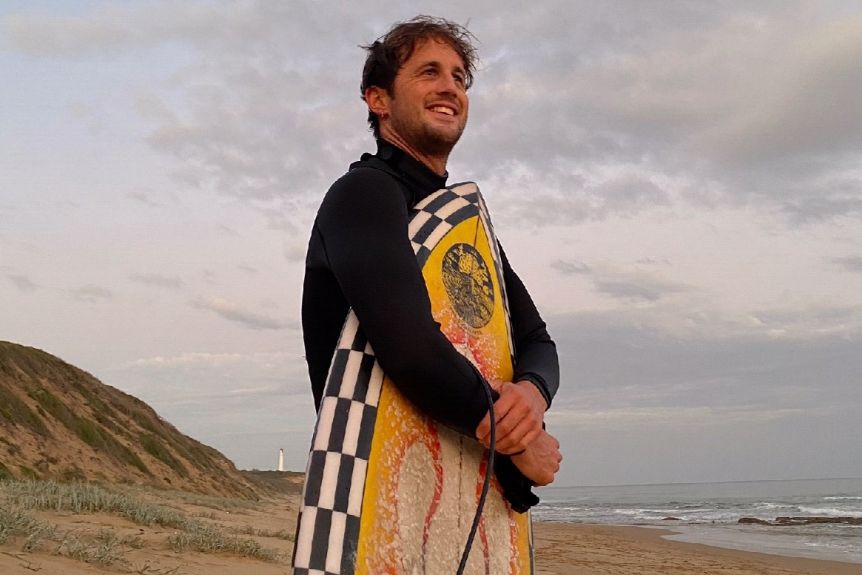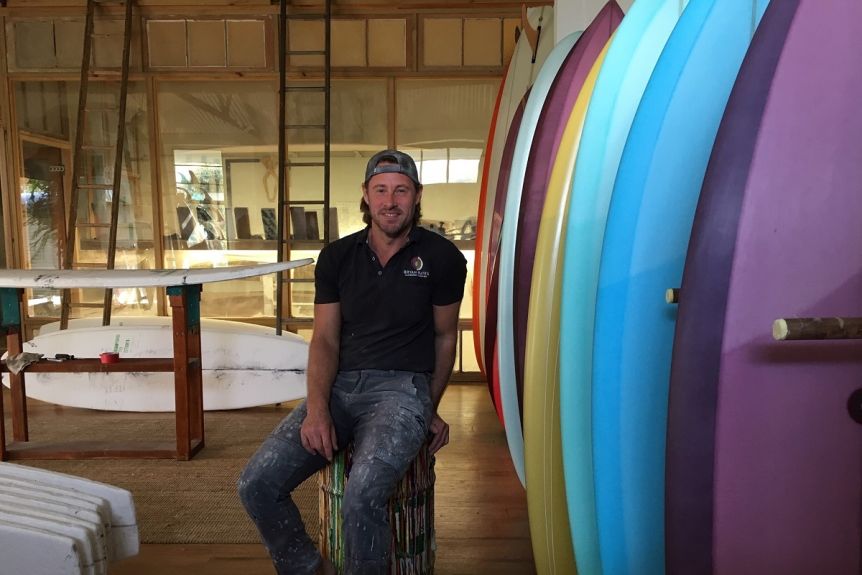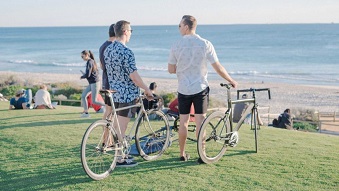Retail data coming out of the surf industry shows many Australians have responded to the COVID-19 pandemic by going surfing.
Key points:
- Sales in some categories of surfboards leap by over 3,000 per cent in May
- Retail data suggests stimulus payments were spent on surf equipment
- Australians find refuge from the pandemic in surfing
The industry has experienced some eyebrow-raising retail sale growth since March, according to Keith Curtain, whose company ActionWatch generated retail data from the surf and action sports sectors.
Mr Curtain said he triple checked figures for May from stores across Australia showing sales of surfboards in the seven-to-nine-feet category skyrocketed by 3,665 per cent, compared with the same period last year.
In June, the growth for that category returned to a more modest 116 per cent growth year on year.
Mr Curtain said the timing of the sales spike indicated the industry was buoyed by JobKeeper and JobSeeker payments.
“Surfing was one of the few sports that was permissible during lockdown … they weren’t playing footy, they weren’t playing cricket or netball, they were out there surfing until dark.
“When the shit hits the fan, Australians go surfing, and that is what’s happened.
“They’ve got their new wetsuit, their new board and they’ve gone, ‘Right, we are going to do this lockdown in style’ and they are out there in greater numbers than ever before.”
Trade like ‘weekend before Christmas’
Damien Goss, manager of Byron Bay surfboard manufacturer and retailer On Board Industries, described recent trade as “Christmas in July”.
Mr Goss said when stage three lockdowns were introduced in New South Wales in late March he expected trade to drop-off.
“Then we had the weekend that you might do the weekend before Christmas; it was huge,” he said.
Mr Goss said sales had remained strong through the pandemic.
Mr Goss said there was a marked uptick in the number of people who took up surfing, based on the boom in sales of the soft boards popular with learners.
“I was surprised,” he said.
“We had people coming in who had lived in Byron Bay for 15 years and never gone surfing.
“I thought everyone came here to surf but I was wrong.”
New surfers keen to ‘get in touch with nature’
Teacher and keen surfer Joe Draffen said Mr Curtain’s data was evident out in the water.

“There’s definitely been a lot of crew who have been surfing a lot throughout the [coronavirus] time; other people working who were from their homes who were surfing more,” he said.
Mr Draffen said he also noticed plenty of new people taking up the sport.
“I think everyone was trying to get in touch with nature,” he said.
“And think how they could be more physically active in the outdoor environment because all of the indoor options for sport and lifestyle were taken away,” he said.
No fear of missing out
When schooling moved online, Mr Draffen left Melbourne and moved back to Fairhaven on the Great Ocean Road in Victoria so he could work from home and surf every day.
He said many of his surfer friends invested their JobKeeper payments in new surfing gear, while others had spare income because not much else was going on to spend their money on.
“Maybe people would have skipped out [on surfing purchases] in other years and tried to use the money for something else but everyone is just going, ‘This is it for the winter, there is nothing else going on, so I’m going to get the best of the best gear’,” Mr Draffen said.
“Normally, when I am down the coast, I wonder what’s on in the city that weekend but there just wasn’t any fear of missing out because everyone knows it is the place to be right now when the city is a bit grim.”
Custom surfboard shaper Bryan Bates said the pandemic was good for Australian surfboard manufacturing because it reinforced a trend towards more considered consumerism and buying locally.

Mr Curtain said surfing has so far proven to be COVID-proof.
“It’s linked to something that is more than just a sport.
“Surfing is just so iconic to our lifestyle and that’s backed up by the data.”






Recent Comments